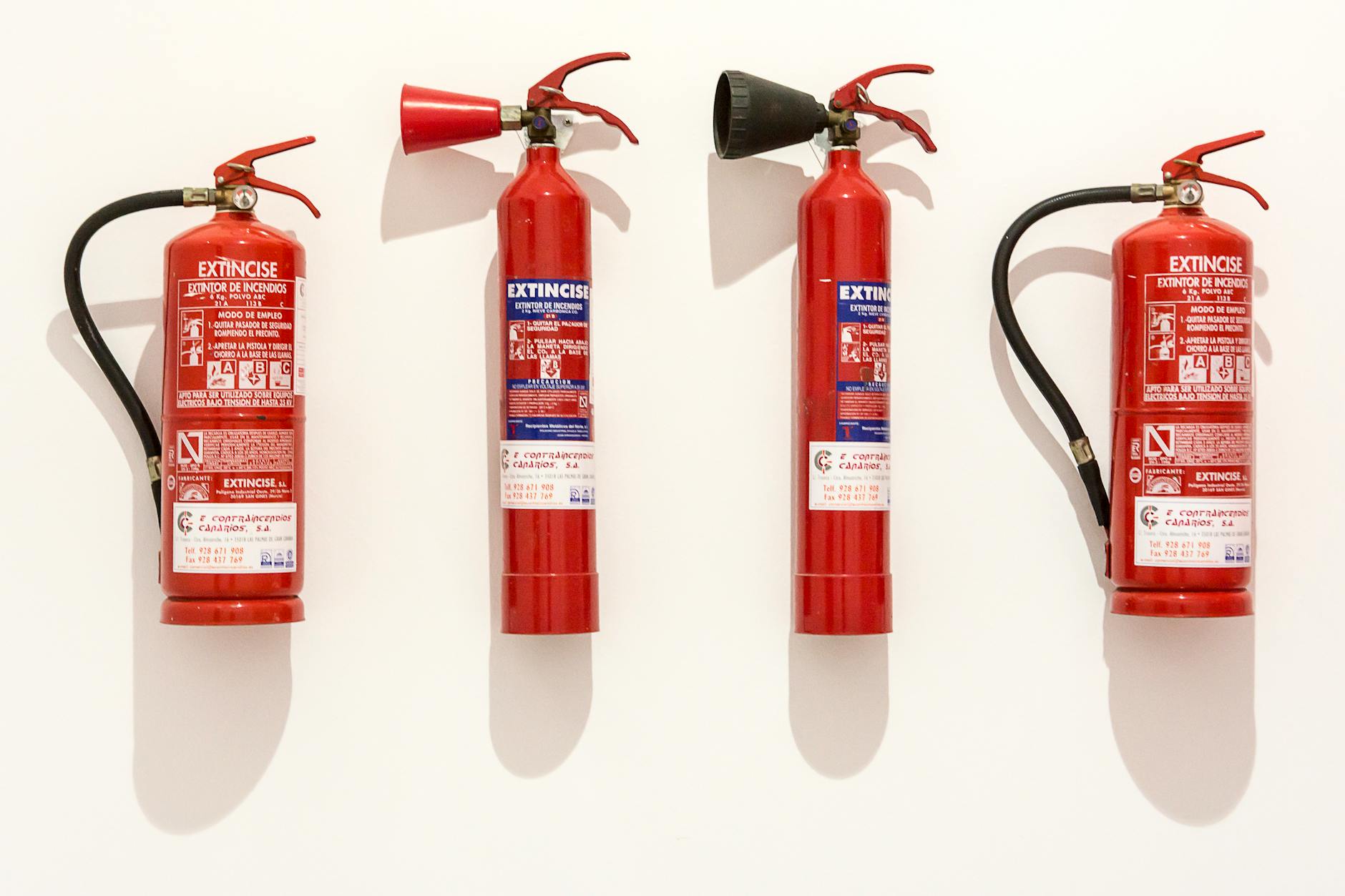
Classification of Fire Extinguisher | Download PPT
Fire safety is paramount in any environment, be it at home, work, or a public space. Among the crucial tools for combating fires, fire extinguishers play a pivotal role. In this comprehensive guide, we’ll delve into the intricacies of the classification of fire extinguishers, helping you understand the types, usage, and essential information for effective fire protection.
Understanding Fire Classes
Fires are classified into different categories, known as fire classes. These classes—A, B, C, D, and K—categorize fires based on the materials involved. Each class requires a specific approach for effective extinguishing.
Types of Fire Extinguishers
To combat various fire classes, a range of fire extinguishers exists, each designed for specific scenarios. Understanding these types is crucial for selecting the right extinguisher for a given situation. Multi-class extinguishers, capable of handling different fire classes, also play a significant role.
Water and Foam Extinguishers (Class A)
For fires involving ordinary combustibles like wood or paper, water and foam extinguishers are the go-to choice. Their effectiveness lies in smothering the flames and cooling the fuel.
Carbon Dioxide Extinguishers (Class B and C)
CO2 extinguishers are suitable for flammable liquid fires (Class B) and electrical fires (Class C). They work by displacing oxygen, effectively smothering the fire.
Dry Chemical Extinguishers (Class A, B, C)
Versatile dry chemical extinguishers are effective for Class A, B, and C fires. They use a powder that interrupts the chemical reaction of the fire, providing a multi-class solution.
Metal/Sand Extinguishers (Class D)
Designed for fires involving combustible metals, such as magnesium or titanium, metal/sand extinguishers prevent chemical reactions and suppress flames.
Kitchen Fire Extinguishers (Class K)
Specifically crafted for commercial kitchens, Class K extinguishers tackle high-temperature fires involving cooking oils and fats. Their unique formulation ensures efficient suppression.
Understanding Fire Extinguisher Labels
To use a fire extinguisher effectively, it’s crucial to understand the labels. These labels provide information about the classes of fires the extinguisher can handle, ensuring proper usage in emergencies.
Fire extinguishers are classified based on the type of fire they are designed to extinguish. The classification is denoted by a letter and a symbol. The common classifications are as follows:- Class A:
- Symbol: Green triangle.
- Suitable for fires involving ordinary combustible materials such as wood, paper, cloth, and plastics.
- Class B:
- Symbol: Red square.
- Designed for flammable liquid fires, including gasoline, oil, grease, and other similar materials.
- Class C:
- Symbol: Blue circle.
- Effective on fires involving electrical equipment. It is important to note that water-based extinguishers are not suitable for Class C fires, as they may conduct electricity.
- Class D:
- Symbol: Yellow decagon.
- Designed for fires involving combustible metals such as magnesium, titanium, sodium, and potassium.
- Class K:
- Symbol: Black hexagon.
- Suitable for fires involving cooking oils and fats, commonly found in commercial kitchens.
Each classification is tailored to address specific types of fires, and it is crucial to use the appropriate fire extinguisher for the specific type of fire to achieve effective suppression. Additionally, some fire extinguishers are labeled with multiple classes to provide versatility in addressing different types of fire hazards.Maintenance and Inspection
Regular maintenance and inspection of fire extinguishers are paramount for their effectiveness. Simple checks can make a significant difference in ensuring these life-saving devices are always ready for action.
Training and Awareness
Having fire extinguishers is not enough; proper training in their usage is equally vital. Promoting awareness about fire safety practices further enhances the overall preparedness in residential and workplace settings.
Common Mistakes to Avoid
Despite their simplicity, mistakes in handling fire extinguishers can lead to dire consequences. Identifying and avoiding these common errors is crucial for effective firefighting.
Environmental Considerations
While fire safety is a priority, it’s essential to consider the environmental impact of extinguisher chemicals. Exploring eco-friendly alternatives ensures we protect both lives and the planet.
HAZOP Study for Process Industry | Download PPT
Engineering Safety MCQs | Download PPT
Construction Safety MCQs | Download PPT
According to OSHA and NEBOSH: Difference Between Accident and Incident | Download PPT
Conclusion
In the face of a fire emergency, the classification of fire extinguishers becomes a critical factor in successfully combating the flames. Understanding the types, labels, and proper usage is a collective responsibility for ensuring the safety of ourselves and those around us.
FAQs
- Q: How often should I inspect my fire extinguisher?
- A: Regular visual inspections should be conducted monthly, while a professional inspection is recommended annually. This ensures your extinguisher is in optimal condition when needed.
- Q: Can I use a water extinguisher on an electrical fire?
- A: No, water conducts electricity and can pose a significant danger in electrical fires. Use a CO2 or dry chemical extinguisher designed for Class C fires.
- Q: Are all fire extinguishers rechargeable?
- A: No, not all extinguishers are rechargeable. Check the label or contact the manufacturer to determine if your extinguisher can be refilled after use.
- Q: How do I clean up after using a fire extinguisher?
- A: While the primary goal is safety, the residue from dry chemical extinguishers can be cleaned with a vacuum cleaner or a dry cloth. Follow the manufacturer’s guidelines for specific instructions.
- Q: Can I use a fire extinguisher on a grease fire in my kitchen?
- A: Yes, but it’s essential to use a Class K extinguisher designed specifically for kitchen fires involving cooking oils and fats.
























